

If you want to buy a keeper, it’s very hard to beat the long-term quality of America’s two favorite mid-size sedans: the Toyota Camry and the Honda Accord.
Every year since 1996, the best selling car in America has been either the Toyota Camry or the Honda Accord. In fact, they are so dominant in today’s used car marketplace that millions of consumers are willing to pay a stiff price premium just to own one of these brands instead of a competing model.
Is that price premium worth it? Well, I’ll put it to you this way: Over the last three years I have developed a study called the Long-Term Quality Index which has inspected and appraised well over a million trade-ins throughout the United States, including over 29,000 Toyota Camrys and 23,000 Honda Accords. These vehicles are individually inspected by certified mechanics who determine the mechanical condition of each vehicle.
This is what we found:
The Toyota Camry and Honda Accord are three times more likely to be traded-in with over 200,000 miles on them than the average mid-sized car. This means that owners are keeping them on the road far longer than their competition.
Each model by itself has more trade-ins that are over 15 years old or over 200,000 miles than all European manufacturers combined. This is despite the fact that there have been more than six times as many trade-ins from European brands than from either the Accord or Camry.
American and Korean manufacturers still haven’t caught up to either one of these two models when it comes to long-term quality.
However, there are some major issues that both models do experience quality-wise which should be on your radar if you are considering the purchase of either one. No car is perfect, but that doesn’t mean you can’t solve these little problems before they become big. It’s always better to spend the nickels first than waste the dollars later. So what should you watch out for when it comes to Accords and Camrys? We’ll break it down by generations to make it easy.
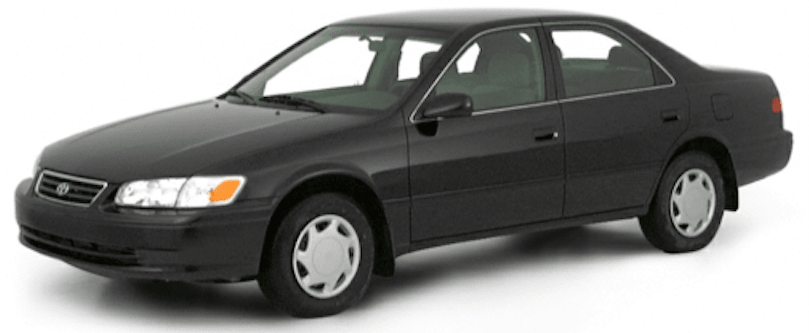
Toyota Camry, 1997-2001
Car & Driver thought so highly of this Camry that they wrote, “With a car like this, who needs a Jaguar?” I have seen these older Camrys register over 250,000 miles with stunning regularity. Toyota knew they had a winner and saw fit to use the Camry four-cylinder and automatic transmission powertrain in everything from sports cars like the Celica and MR-2 to family sedans in Europe, Asia, and the Middle East. The 3.0-liter V6 engine was also put into millions of other Toyota-engineered models from the Toyota Avalon and Lexus RX300, to the Toyota Sienna and Lexus ES300.
However, even with that outstanding level of popularity and Toyota quality, you do have to watch out for a few things.
The motor mounts on these models are notorious for being weak and giving what some owners call, “The Magic Fingers Massage”. If you feel a lot of vibration on the steering wheel, or looseness when you first press your foot on the accelerator, you should have the motor mounts inspected. After nearly 20 years of driving and stopping, they are probably wore out.
The upper strut rod bushings on these Camrys love to groan as they get older. This is not a safety issue. But if you’re annoyed by the sound, you may want to use our estimator to determine the replacement cost.
Toyota engines from the 1990s tend to need to have their PCV valves replaced on a frequent basis to avoid performance and longevity issues. This is a cheap part — less than $10. When replaced every 30,000 miles, the PCV valve will help keep your Camry running as it should.
There is a big difference with trim levels as well when it comes to the anti-lock brakes. Base CE models don’t come with any anti-lock brakes and many mid-level LE models didn’t offer them either. You should always turn the key to the on position and see if there is an ABS light on the dashboard to make sure anti-lock brakes are included in your model.
In addition, the Toyota Camry of this time period tended to have fewer cosmetic features such as alloy wheels and color matching door handles, which were often optional instead of standard equipment. This is why the high-end XLE model is likely going to be your best bet if you want a car with plenty of popular features and an almost luxury level of look and refinement.
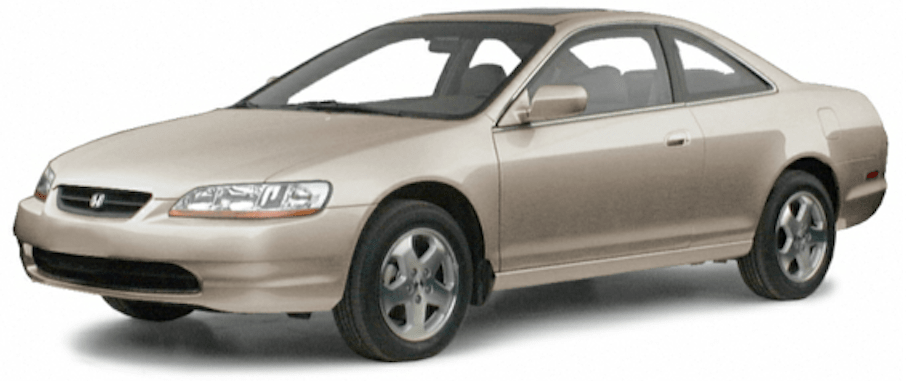
Honda Accord, 1998-2002
This Accord represents one of only two generations to displace the Toyota Camry as America’s best selling car.
One of the biggest reasons for its success is the level of features you get when compared with the Camry. To be blunt, Accords of this time tended to offer more features standard than the Camry, which was more focused on price.
While base DX models were relatively bare-bones, the mid-level LX models offered cruise control, alloy wheels, power windows, door-locks, mirrors, and air conditioning all as standard equipment. EX models added leather seats which were a match for most luxury cars of that time, as well as an optional 3.0-liter V6 that produced 200 horsepower coupled with Honda’s VTEC technology which gave the V6 better fuel economy than many of its four-cylinder competitors.

Still, there is one major caution be aware of with this model: the transmission.
If you shop for this generation, be extra aware of the type of transmission. The manual transmissions are bulletproof, but the automatic transmissions in the four-cylinder and six-cylinder models required an extended warranty that is no longer in effect.
The automatic transmissions from the Accords of this and the prior generation tended to be far worse than average. If you get one that was recently replaced, you should be good for a long while. But if not, I highly recommend a 150-point pre-purchase inspection so that a professional mechanic, such as one from YourMechanic, can figure out whether the transmission has been recently or may need to be replaced.
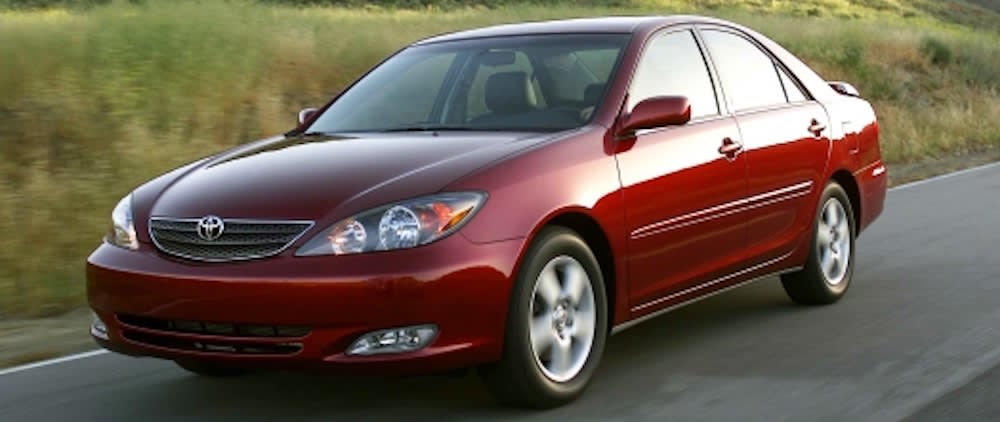
Toyota Camry, 2002-2006
This Camry is widely seen as the one that cemented Toyota’s dominance in the mid-size car market. All trim levels came standard with a 2.4-liter four-cylinder engine that was downright peppy when compared with the prior generations, and the V6 models offered a luxury level of refinement to the driving experience.
Toyota wisely decided to consolidate the Camry to just three trim levels — LE, SE, and XLE (bare bones STD models were also available but rare) — and to fit all versions with advanced safety features such as traction control, electronic stability control, a side-impact protection system, and four-wheel ABS disc brakes. This generation was a clean sweep as America’s best selling car and appealed to a lot of younger families looking for a safe and surprisingly fun vehicle.
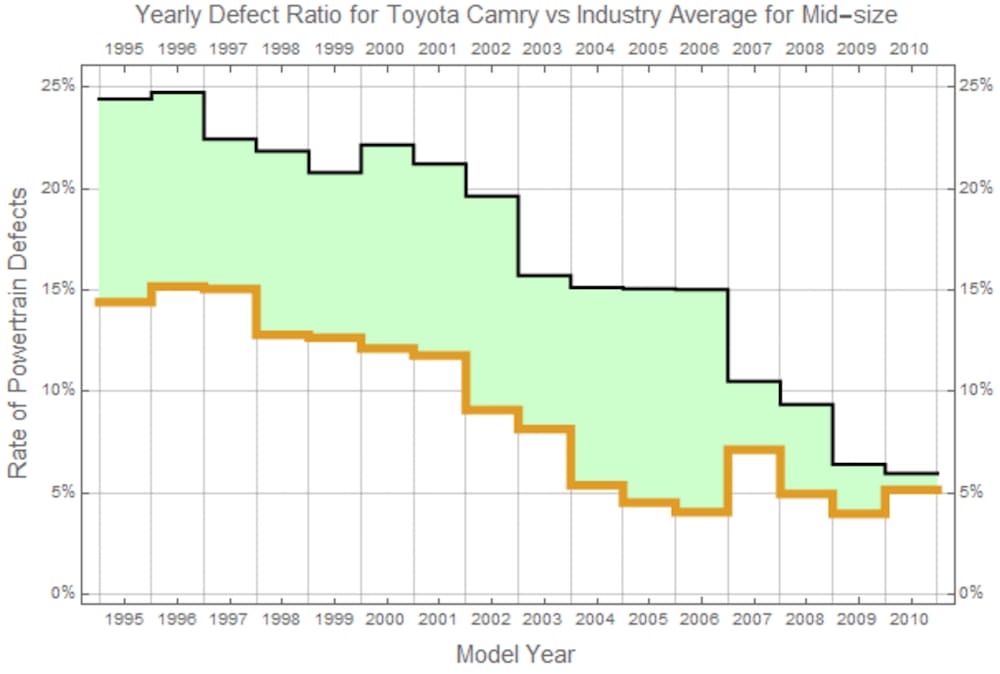
As you can see, this generation continued to outperform the mid-sized competition when it came to long-term quality. However, there are a few important points you need to keep in mind when considering this model.
The automatic transmissions were engineered by Aisin which also supplied similar units to Nissan and Volvo. These units love fresh fluid and, thankfully, while Volvo marketed their versions as “lifetime fluids,” Toyota wisely encouraged consumers to have this fluid changed every 60,000 miles. If you buy one, make sure that has been done consistently and continue that regimen.
The V6 versions do come with a timing belt replacement, and if you’re going to do it right, you will need to replace all the other parts that wear in tandem with the belt, such as the tensioner and idler pulley. This repair doesn’t cost much money at all. So when yours is due, you may want to invest in also changing out the power steering fluid, brake fluid, and coolant so that your car can easily last for many more years.
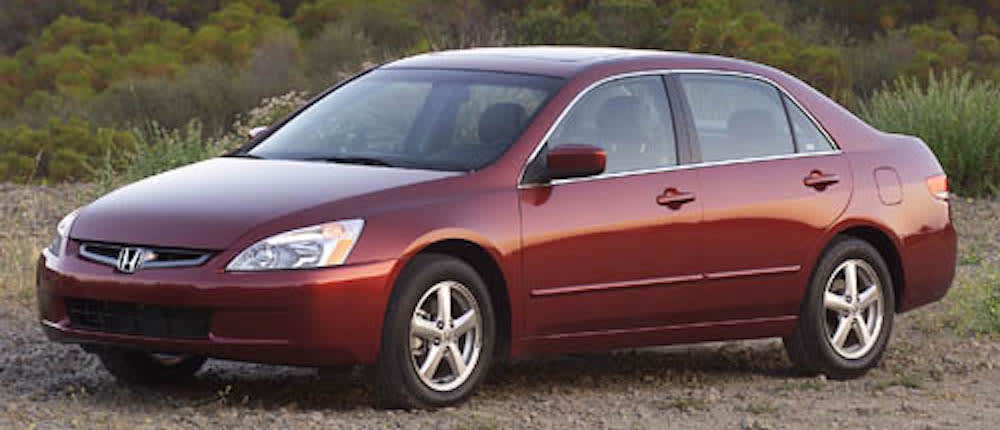
Honda Accord, 2003-2007
Honda’s new focus on a youthful, sporty driving experience made this generation a better fit for those looking for a fun-to-drive car that can also handle family duties. The Honda Accord continued on with two-door and four-door offerings along with a hybrid model which debuted in 2006 and provided a class-leading 37 miles per gallon on the highway.
If you’re looking into purchasing a model from this generation, know that the areas in which this Accord will need extra care include the following:
Regular transmission fluid service is a must. Honda is still experiencing transmission issues with this generation according to our study and Carcomplaints.com, an independent site which records issues forwarded to the National Highway Traffic Safety Administration. You definitely want to have the fluid serviced every 60,000 miles.
Stereo issues may also come up. You may find that the speakers become glitchy or that the CD player stops working. In those cases, you can simply install a replacement unit or handle any other minor interior issues that are due to wear.
For most Accords of this generation, you’re trading a 7% hit in fuel economy with the four-cylinder and six-cylinder models for a lot better road feel and handling. LX, LX-V6, and EX-V6 models (2005 and later) came with advanced safety features such as dual frontal-side and side-curtain airbags. Overall these models were loaded with few options in order to make these trims easier to assemble and more cost competitive. Even low-spec LX models came standard with keyless remotes, 16-inch wheels, air conditioning, cruise control, and a fold-down rear seat which helped expand the cargo area.
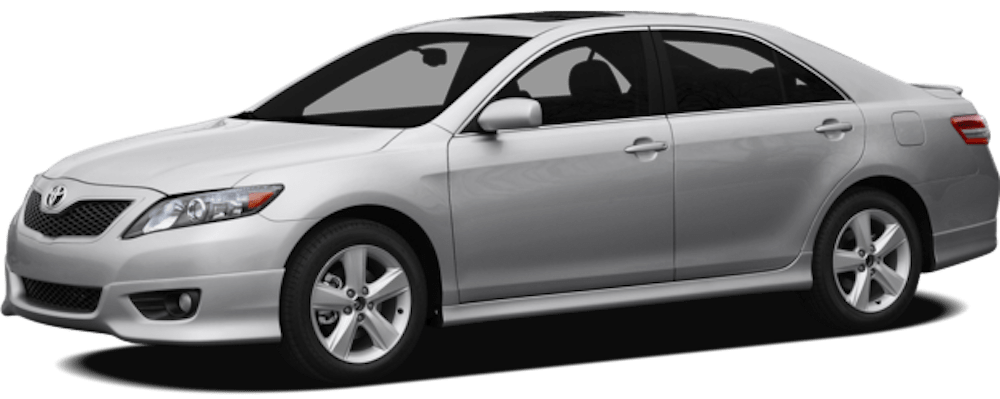
Toyota Camry, 2007-2011
The new-for-2007 Toyota Camry experienced serious teething problems due to dashboards that would prematurely wear and flake off, along with four-cylinder engines built during the first year of production that experienced excessive oil consumption.
Overall reliability remained above average, although no longer exceptional, with the re-introduction of the base CE model and the carryover of LE, SE, and XLE trims. Both four-cylinder and six-cylinder models were carried forward from the prior generation.
While the Accord represented sport in the mid-size segment, the Toyota Camry took a complete 180 and focused on a more luxurious and smooth ride that would appeal to an older demographic. The average age of Toyota Camry buyers would move up from 46 to 60 years between the beginning and end of the model run.
Those looking for the ultimate boulevard cruiser should make sure to take care of the following:
Engine and transmission fluid changes are essential for this generation. Take extra care to ensure that the Camry has been serviced correctly and invest in parts that are considered to be OEM equivalent. Certified mechanics, such as those at YourMechanic, can help find those specific parts for you.
Interior wear issues take place sooner with this generation. Like nearly all competitors, Toyota decided to “decontent” the interior in order to make the model more cost competitive. The good news is these items are very cheap and reasonable to replace. Most interior components can be taken care of in less than two hours making it ideal if you want someone from YourMechanic to come to your home or place of business to install these new parts for you.
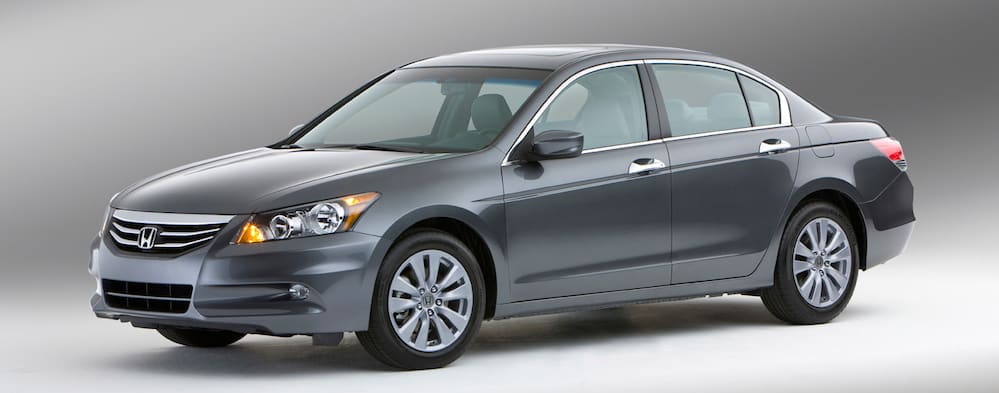
Honda Accord, 2008-2012
The 2008 Honda Accord, like the Camry, became a longer, lower, and wider vehicle. Although it continued to have a sporty feel, the interior size of this generation is more in line with full-size cars of only a few years ago.
While the Accord stays with its proven powertrain, it expands with interior room and safety that are at the head of the class. This new generation is a safety juggernaut with dual-threshold front airbags (for adults and children), dual front- and rear-side bags, and adaptive head restraints. All rear passengers get passive head restraints, and both rows have curtain airbags. It also comes with anti-lock brakes, stability control, traction control, and tire-pressure monitoring. All these features are standard equipment on all Accord models.
So far the Accord has offered outstanding long-term reliability. Still, it is recommended that you pay attention to the following details:
Follow the maintenance schedule in the owner’s manual to the letter. What you don’t neglect now, you won’t have to pay more for later.
Stay the course with OEM equivalent parts. Like the Camry, the Accord can endure for a very long time if you invest in it the right way. Don’t go for the cheap stuff. If you would like some guidance as to which parts you should order, the technicians at YourMechanic will be more than happy to help you.
The quality and staying-power of both the Honda Accord and the Toyota Camry make them some of your best choices if you’re in the market for a reliable used car, and their price premiums are far worth it if you keep in mind the specific quirks and kinks of the generation and model you select. By referencing and addressing the points in this article, you’ll be able to choose just the right car for you that will last you many years to come.



